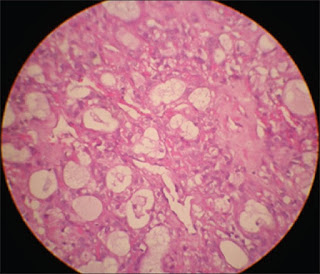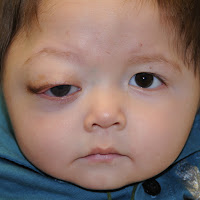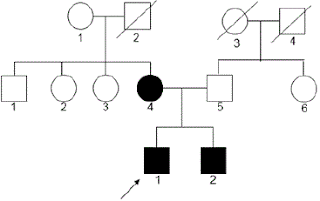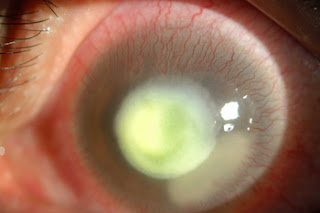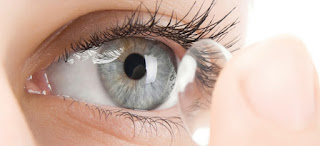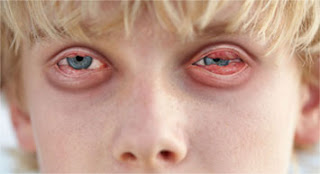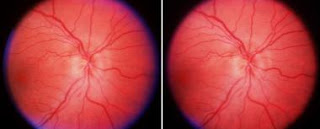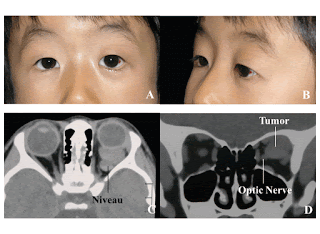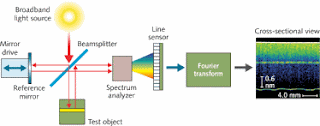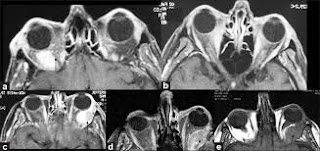Pleomorphic adenomas (PA) are
common benign tumours of the lacrimal gland. Necrosis in PA is unusual and
should raise a suspicion and screen for malignancy. We hereby present a casereport of pleomorphic adenoma with necrotic foci in the orbit of a 44-year-oldlady and a review of current literature for focal necrosis in orbitalpleomorphic adenoma.
Lacrimal gland tumours are rare
entities that only comprise 9% of orbital lesions. Of those 9% of cases, only 10%
are pleomorphic adenomas. Pleomorphic adenomas (PA) are the most common benigntumours of the lacrimal gland, which exhibit pleomorphism of epithelialcomponents. However there are certain histological characteristics in
pleomorphic adenomas, which may raise suspicion of atypia and prompt further
investigation. Auclair and Ellis ET al. has noted that areas of necrosis, hyper
cellularity, hyalinization, cytological atypia, capsule extension or violation
may be predictors of malignancy.
